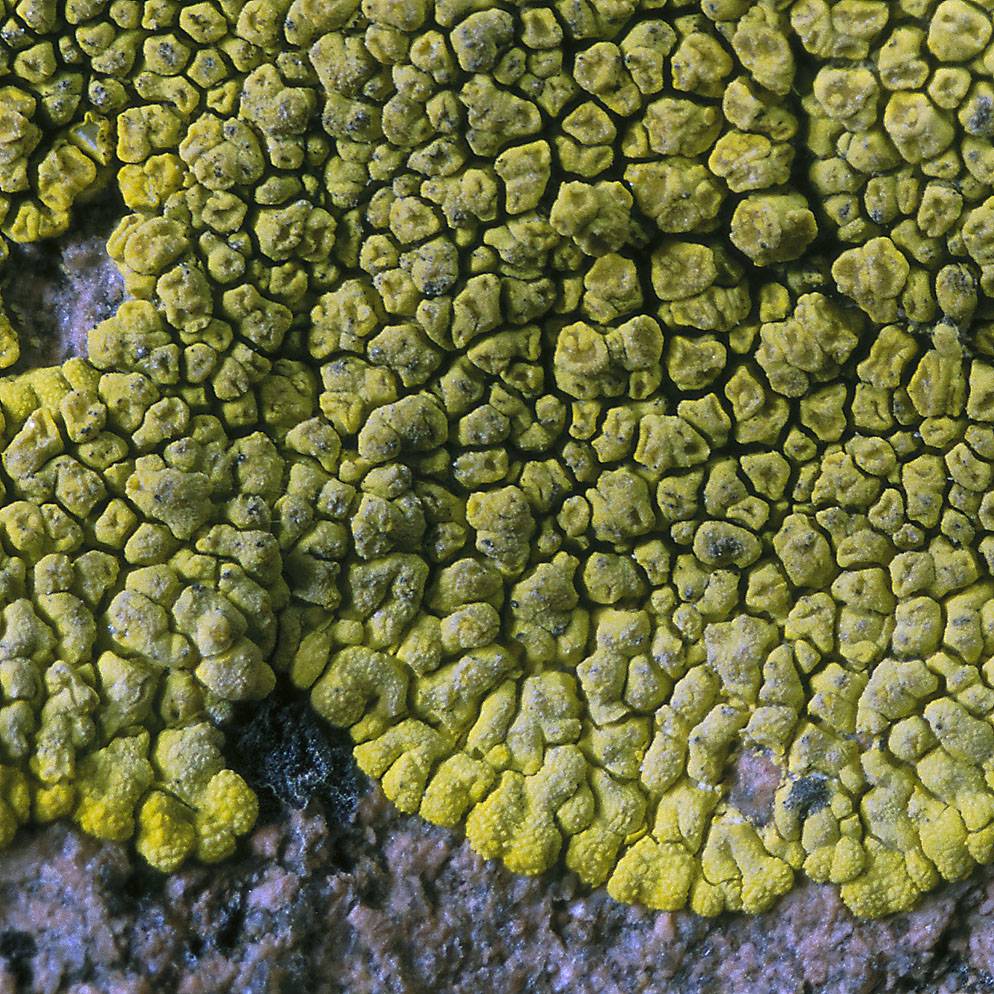
Consortium of Lichen Herbaria
- building a Global Consortium of Bryophytes and Lichens as keystones of cryptobiotic communities -
- Home
- Search
- Images
- Species Checklists
- US States: O-Z >
- US National Parks
- Central America
- South America
- US National Parks
- Southern Subpolar Region
|
Family: Acarosporaceae |
Nash, T.H., Ryan, B.D., Gries, C., Bungartz, F., (eds.) 2007. Lichen Flora of the Greater Sonoran Desert Region. Vol 3. Life habit: lichenized Thallus: crustose, lobed at margins, bright greenish yellow to yellow; upper cortex: prosoplectenchymatous Ascomata: apothecia immersed in the areoles becoming lecanorine to biatorine discs: yellow true exciple: hyaline hymenium: mostly under 100 µm high paraphyses: septate, with few branches asci: Pleopsidium-type, with well-developed tholus and wide ocular chamber and an axial mass, K/I+ blue at least in the lower half of the expanded tholus, 100+-spored ascospores: simple, hyaline, minute, 5-6(-6.5) x 2-2.3(-3) µm, ellipsoid; wall: smooth Conidiomata: pycnidial, with conidiophores type I of Vobis (1980); conidiogenesis: acrogenous conidia: ellipsoid, at the posterior end often somewhat curved Secondary metabolites: cortex and epihymenium with pulvinic acid derivatives (rhizocarpic acid); medulla with fatty acids only Substrate: on steep or overhanging rock surfaces, in cool, humid areas (arctic-alpine), or open, dry, often hot sites Geography: Antarctica, Asia, Europe, North and South America. Notes: Because there are at least two effigurate, yellow Acarospora, A. erythrophora (C+ thallus and apothecia) and A. novomexicana, one should not assume that every yellow placodioid specimen is a Pleopsidium. In Acarospora, the ascus tholus is K/I-. Based on its ascal and cortical differences with Acarospora s.s., Hafellner (1993) suggested that Pleopsidium would be better accommodated in the Lecanoraceae. However, based on their molecular investigations, Reeb et al. (2004) recommended placing Pleopsidium back in the Acarosporaceae. The acsus stain underlies the genus concept. A prosoplentenchymatous cortex is also found in some species of Acarospora, particularly those with interrupted algal layers. |
Powered by Symbiota









